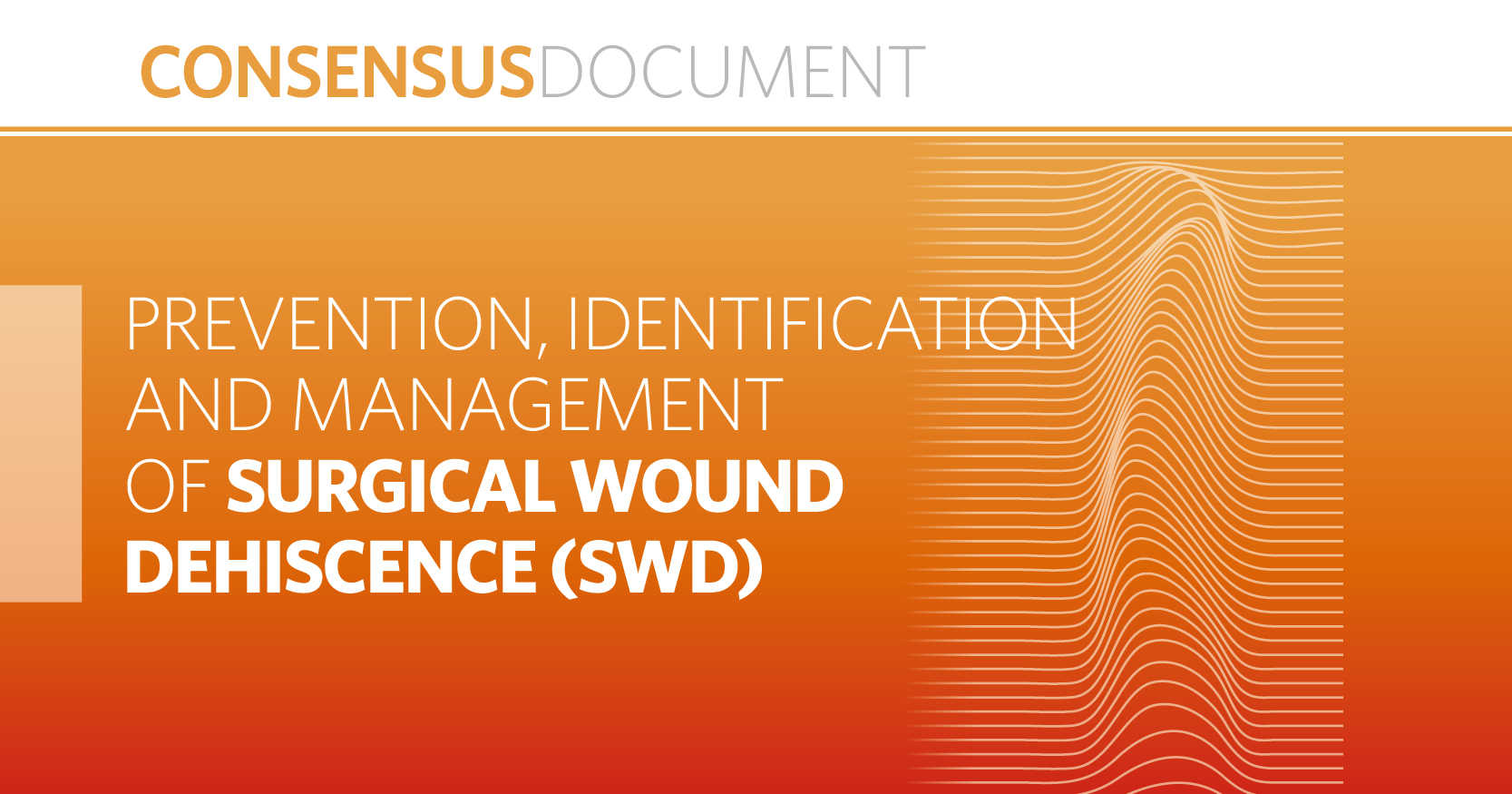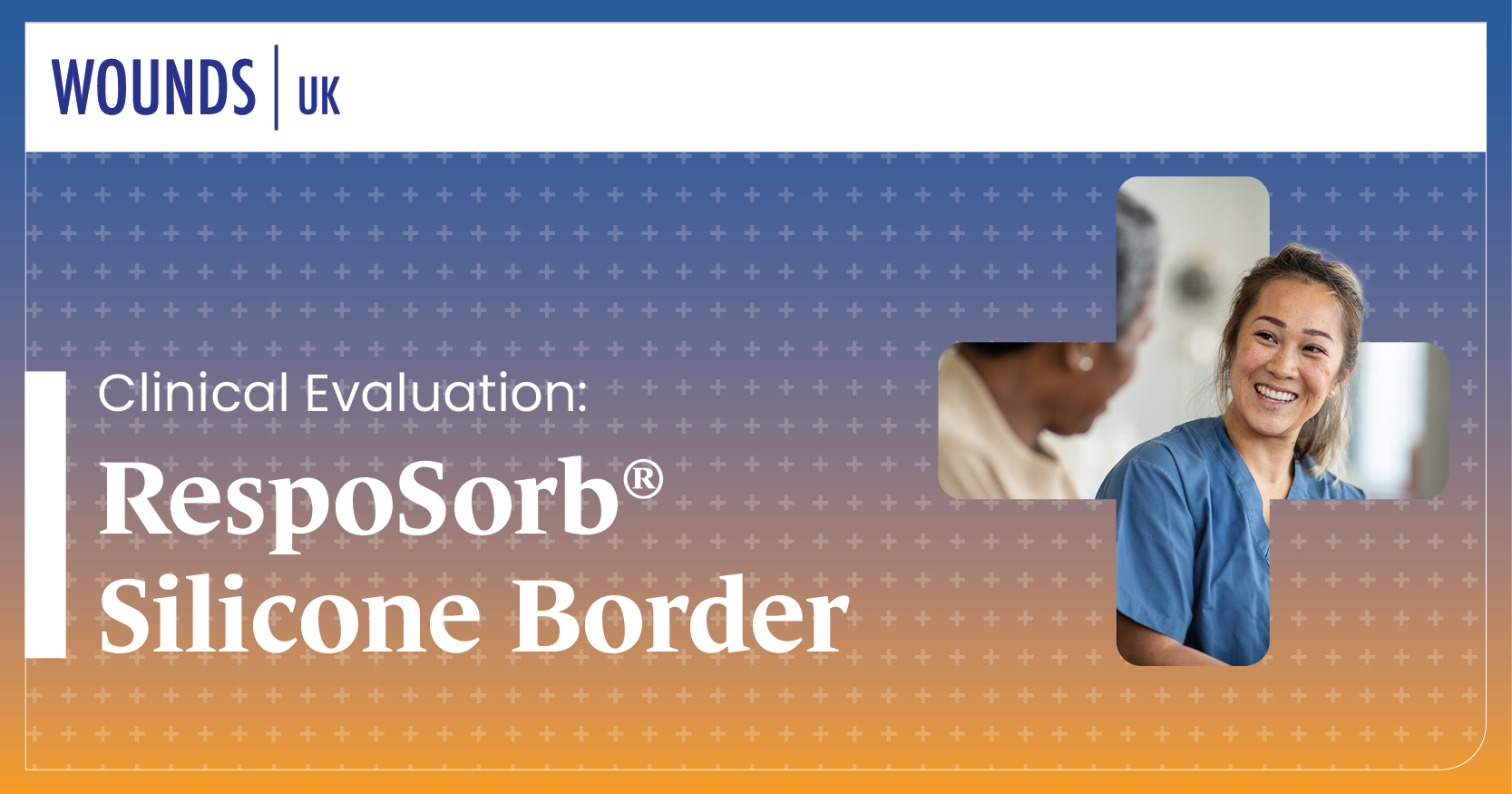ReferencesAndersen BM (2018) Prevention of Postoperative Wound Infections. Prevention and Control of Infections in Hospitals 25: 377-437
Australian Institute of Health and Welfare (2022) National Core Maternity Indicators. Available at: https://www.aihw.gov.au/ (accessed 09.06.2023)
Avishai E, Yeghiazaryan K, Golubnitschaja O (2017) Impaired wound healing: facts and hypotheses for multi-professional considerations in predictive, preventive and personalised medicine. EPMA J 8(1): 23-33
Blencowe NS, Rooshenas L, Tolkien Z et al (2019) A qualitative study to identify indicators of the quality of wound closure. J Infect Prev 20(5): 214-23
Centers for Disease Control and Prevention (2023) Surgical site infection event (SSI). Available at: https://www.cdc.gov/nhsn/pdfs/pscmanual/9pscssicurrent.pdf (accessed 09.06.2023)
Davies J, Davies D (2010) Origins and evolution of antibiotic resistance. Microbiol Mol Biol Rev 74(3): 417-33
Delaney A, Diamantis S, Marks VJ (2011) Complications of tissue ischemia in dermatologic surgery. Dermatol Ther 24(6): 551-7
De Vries FE, Wallert ED, Solomkin JS et al (2016) A systematic review and meta-analysis including GRADE qualification of the risk of surgical site infections after prophylactic negative pressure wound therapy compared with conventional dressings in clean and contaminated surgery. Medicine 95(36): e4673
Dhoonmoon L, Fletcher J, Atkin L (2021) Best Practice Statement. Addressing skin tone bias in wound care: assessing signs and symptoms in people with dark skin tones. Wounds UK
Dowsett C, Hampton J, Myers D, Styche T (2017) Use of PICOTM to improve clinical and economic outcomes in hard-to-heal wounds. Wounds International 8(2): 52-9
Dumville JC, Owens GL, Crosbie EJ et al (2015) Negative pressure wound therapy for treating surgical wounds healing by secondary intention. Cochrane Database of Systematic Reviews 6: CD011278
Ellis H (2010) Applied anatomy of abdominal incisions. Br J Hosp Med 71(3): M36-M37
ERAS Society (2023) Guidelines. Available at: https://erassociety.org/guidelines/ (accessed 05.05.2023)
Fletcher J, Jacklin A, Adderley U (2021) A brief history of pressure ulcer measurement in England: the last 20 years. Wounds UK 17(2): 14-21
Gillespie BM, Ellwood D, Thalib L et al (2022) Incidence and risk factors for surgical wound complications in women with body mass index >30 kg/m2 following cesarean delivery: a secondary analysis. AJOG Glob Rep 2(3): 100069
Gomes ET, de Brito Poveda V, de Araújo Püschel VA (2020) Can nursing actions prevent surgical wound dehiscence? Revista SOBECC 25(2): 114-9
Grabowski G, Pacana MJ, Chen E (2020) Keloid and Hypertrophic Scar Formation, Prevention, and Management: Standard Review of Abnormal Scarring in Orthopaedic Surgery. J Am Acad Orthop Surg 28(10): e408-e414
Gray TA, Rhodes S, Atkinson RA et al (2018) Opportunities for better value wound care. BMJ Open 8(3): e019440
Guest JF, Fuller GW, Vowden P (2018) Costs and outcomes in evaluating management of unhealed surgical wounds in the community in clinical practice in the UK: a cohort study. BMJ Open 8(12): e022591
Guest JF, Gerrish A, Ayoub N et al (2015) Clinical outcomes and cost-effectiveness of three alternative compression systems used in the management of venous leg ulcers. J Wound Care 24(7): 300-8
Guest JF, Taylor RR, Vowden K, Vowden P (2012) Relative cost-effectiveness of a skin protectant in managing venous leg ulcers in the UK. J Wound Care 21(8): 389-98
Guest JF, Vowden K, Vowden P (2017) The health economic burden that acute and chronic wounds impose on an average clinical commissioning group/health board in the UK. Journal of Wound Care 26(6): 292-303
Hampton J, Meagher H, Sharpe A et al (2022) Multi-centre, international practice-based evidence using PICOTM single-use negative pressure wound therapy: challenging current behaviours in wound care practice. Wounds International 13(2): 46-53
Haryanto H, Arisandi D, Suriadi S et al (2017) Relationship between maceration and wound healing on diabetic foot ulcers in Indonesia: a prospective study. Int Wound J 14(3): 516-22
Hope WW, Tuma F (2023) Incisional Hernia. Available at: https://www.ncbi.nlm.nih.gov/books/NBK435995/ (accessed 13.10.2023)
Horan TC, Andrus M, Dudeck MA (2008) CDC/NHSN surveillance definition of health care-associated infection and criteria for specific types of infections in the acute care setting. Am J Infect Control 36(5): 309-32
Hughes J, Costello M, Belshaw M et al (2021) The burden of dehisced wounds in the community: using early results from a multi-centre service evaluation to propose a standard of care to improve patient outcomes and safeguard woundcare budgets. Br J Health Care Manag 27(1): 16-25
Hyldig N, Birke-Sorensen H, Kruse M et al (2016) Meta-analysis of negative-pressure wound therapy for closed surgical incisions. Br J Surg 103(5): 477-86
International Wound Infection Institute (2022) Wound Infection in Clinical Practice. Wounds International
Jaeger M, Harats M, Kornhaber R et al (2016) Treatment of hypergranulation tissue in burn wounds with topical steroid dressings: a case series. Int Med Case Rep J 9: 241-5
Kazzam ME, Ng P (2022) Postoperative Seroma Management. Available at: https://www.ncbi.nlm.nih.gov/books/NBK585101/ (accessed 04.07.2023)
McGillicuddy EA, Ozaki K, Shah SK et al (2016) The impact of vascular surgery wound complications o quality of life. J Vasc Surg 64(6): 1780-8
Morgan-Jones R, Bishay M, Hernández-Hermoso JA et al (2019) Incision Care and Dressing Selection in Surgical Wounds: Findings from an International Meeting of Surgeons. Wounds International
Murphy JA, Myers D, Trueman P, Searle R (2021) Cost-effectiveness of single-use negative-pressure therapy compared with standard care for prevention of reconstruction failure in prepectoral breast reconstruction. BJS Open 5(2): zraa042
NHS Business Services Authority (2017) Pacific Programme. Available at: https://www.nhsbsa.nhs.uk/sites/default/files/2017-09/Pacific%20-%20Case%20Study%20-%20Accelerate%20CIC%20%28wound%20care%29.pdf (accessed 06.06.2023)
NHS Digital (2023) SNOMED CT. Available at: https://digital.nhs.uk/services/terminology-and-classifications/snomed-ct#national-requirements-for-snomed-ct%20NATIONAL%20REQUIREMENTS (accessed 18.07.2023)
NHS Supply Chain (2023) Partnership Working with Lancashire and South Cumbria ICS Identifies Savings of £640,000 on Wound Care Dressings. Available at: https://www.supplychain.nhs.uk/news-article/lancashire-and-south-cumbria-ics-identifies-savings-of-640000/ (accessed 06.06.2023)
National Wound Care Strategy Programme (2021a) Recommendations for Surgical Wounds. Available at: https://www.nationalwoundcarestrategy.net/wp-content/uploads/2021/05/Surgical-Wound-Recommendations-WEB-25Feb21-1.pdf (accessed 25.05.2023)
National Wound Care Strategy Programme (2021b) Wound Management Digital Systems. Available at: https://www.nationalwoundcarestrategy.net/wp-content/uploads/2021/08/Wound-Management-Digital-Systems-18Aug21.pdf (accessed 05.06.2023)
National Institute for Health and Care Excellence (2016) Chronic wounds: advanced wound dressings and antimicrobial dressings. Available at: https://www.nice.org.uk/advice/esmpb2/resources/chronic-wounds-advanced-wound-dressings-and-antimicrobial-dressingspdf-1502609570376901 (accessed 05.06.2023)
Norman G, Goh EL, Dumville JC et al (2020) Negative pressure wound therapy for surgical wounds healing by primary closure. Cochrane Database Syst Rev 5(5): CD009261
Norman G, Shi C, Goh EL (2022) Negative pressure wound therapy for surgical wounds healing by primary closure. Cochrane Database Syst Rev 4(4): CD009261
Ousey KJ, Milne J (2014) Exploring portable negative pressure wound therapy devices in the community. Br J Community Nurs S14–20
Panca M, Cutting K, Guest JF (2013) Clinical and cost-effectiveness of absorbent dressings in the treatment of highly exuding VLUs. J Wound Care 22(3): 109–18
Peterson E, Kaur P (2018) Antibiotic resistance mechanisms in bacteria: relationships between resistance determinants of antibiotic producers, environmental bacteria, and clinical pathogens. Front Microbiol 9: 1-21
Phelps S, Smith W, Smith T et al (2021) Using the dehisced surgical wounds aetiology-specific T.I.M.E. clinical decision support tool to promote consistent holistic wound management and eliminate variation in practice. Wounds International 12(4): 38-45
Rochon M, Jawarchan A, Fagan F et al (2023) Image-based digital post-discharge surveillance in England: measuring patient enrolment, engagement, clinician response times, surgical site infection, and carbon footprint. J Hosp Infect 133: 15-22
Ryszard S, Adam M (2013) The use of fibular free flap for reconstruction of anterior chest wall full-thickness defects. Open J Thorac 3(4): 107-110
Sandy-Hodgetts K, Carville K, Leslie G (2013) Determining risk factors for surgical wound dehiscence: A review of the literature. Int Wound J 12(3): 265-75
Sandy-Hodgetts K, Carville K, Leslie GD (2015) Determining risk factors for surgical wound dehiscence: a literature review. Int Wound J 12(3): 265-75
Sandy-Hodgetts K, Leslie G, Lewin G, Carville K (2016) Surgical wound dehiscence in patients referred to a Western Australian community nursing service during 2010: Time and cost to healing. J Wound Care 25 (7): 377-83
Sandy-Hodgetts K (2017a) Clinical innovation: the Sandy Grading System for Surgical Wound Dehiscence Classification – a new taxonomy. Wounds International 8(4): 6-11
Sandy-Hodgetts K, Ousey K, Howse E (2017b) Ten top tips: management of surgical wound dehiscence. Wounds International 8(1): 11-4
Sandy-Hodgetts K, Leslie GDL, Carville K (2018) Surgical wound dehiscence: a conceptual framework for patient management. J Wound Care 27(3): 119-26
Sandy-Hodgetts K, Carville K, Parsons R et al (2019) The Perth Surgical Wound Dehiscence Risk Assessment Tool (PSWDRAT), development and prospective validation in the clinical setting. J Wound Care 28(6): 332-44
Sandy-Hodgetts K, Ousey K, Conway B et al (2020a) International best practice recommendations for the early identification and prevention of surgical wound complications. Wounds International
Sandy-Hodgetts K, Parsons R, Norman R et al (2020b) Effectiveness of negative pressure wound therapy in the prevention of surgical wound complications in the cesarean section at-risk population: a parallel group randomised multicentre trial-the CYGNUS protocol. BMJ Open 10(10): e035727
Sandy-Hodgetts K, Alves P, Conway B et al (2022) Optimising prevention of surgical wound complications: Detection, diagnosis and prediction. Wounds International
Sandy-Hodgetts K, Morgan-Jones R (2022) Incision care and dressing selection in surgical wounds: Findings from a series of international meetings. Wounds International
Sandy-Hodgetts K, Assadian O, Wainwright TW et al (2023) Clinical prediction models and risk tools for early detection of patients at risk of surgical site infection and surgical wound dehiscence: a scoping review. Journal of Wound Care 32(Sup8a): S4-S12
Saunders C, Nherera LM, Horner A, Trueman P (2021) Single-use negative-pressure wound therapy versus conventional dressings for closed surgical incisions: systematic literature review and meta-analysis. BJS Open 5(1): zraa003
Sazegari MA, Mirzaee F, Bahramian F et al (2017) Wound dehiscence after total knee arthroplasty. Int J Surg Case Rep 39: 196-98
Shikhman A, Tuma F (2022) Abdominal Hematoma. Available at: https://www.ncbi.nlm.nih.gov/books/NBK519551/ (accessed 13.10.2023)
SSERA Group (2023) Surgical patient population risk assessment: The simplified SSERA assessment model. Wounds International
Stephen-Haynes J (2015) The benefits of undisturbed healing using ALLEVYN LIFETM. Wounds International 6(4): 18-21
Strugala V, Martin R (2017) Meta-analysis of comparative trials evaluating a prophylactic single-use negative pressure wound therapy system for the prevention of surgical site complications. Surg Infect (Larchmt) 18(7): 810-9
Tande AJ, Patel R (2014) Prosthetic joint infection. Clin Microbiol Rev 27(2): 302-45
Walming S, Angenete E, Block M et al (2017) Retrospective review of risk factors for surgical wound dehiscence and incisional hernia. BMC Surg 17(1): 19
Wang A, Lv G, Cheng X et al (2020) Guidelines on multidisciplinary approaches for the prevention and management of diabetic foot disease. Trauma 6: 8tkaa017
Wei M, Yang D, Chen L et al (2023) The prevalence of medical adhesive-related skin injury caused by protective dressings among medical staff members during the 2019 coronavirus pandemic in China. J Tissue Viability 32(1): 69-73
Wilson J (2013) Surgical site infection: the principles and practice of surveillance. Part 1: Key concepts in the methodology of SSI surveillance. J Infect Prev 14(1): 6-12
World Health Organization (2018) Global guidelines for the prevention of surgical site infection, 2nd ed. Available at: https://www.who.int/publications/i/item/global-guidelines-for-the-prevention-of-surgical-site-infection-2nd-ed (accessed 25.05.2023)
World Union of Wound Healing Societies (2016) Closed surgical incision management: Understanding the role of NPWT. Wounds International
World Union of Wound Healing Societies (2018) Consensus Document. Surgical wound dehiscence: improving prevention and outcomes. Wounds International
World Union of Wound Healing Societies (2020) Optimising wound care through patient engagement. Wounds International
Wounds International (2023) SSI Surveillance: Promoting a seamless patient journey from surgery to community. Wounds International
Wounds UK (2020a) Best Practice Statement: Post-operative wound care – reducing the risk of surgical site infection. Wounds International
Wounds UK (2020b) Best Practice Statement: Antimicrobial stewardship strategies for wound management. Wounds UK
Wounds UK (2021a) Best Practice Statement: Addressing skin tone bias in wound care: assessing signs and symptoms in people with dark skin tones. Wounds International
Wounds UK (2021b) Best Practice Statement: Care of the person with diabetes and lower limb ulcers. Wounds International
Wounds UK (2022) Best Practice Statement: Active treatment of non-healing wounds in the community. Wounds UK
Zamorano M, Castillo RL, Beltran JF et al (2021) Tackling Ischemic Reperfusion Injury With the Aid of Stem Cells and Tissue Engineering. Front Physiol 12: 705256







